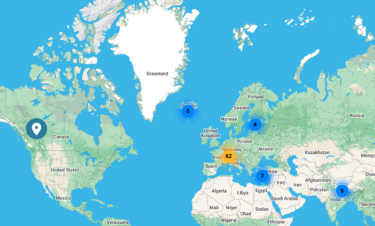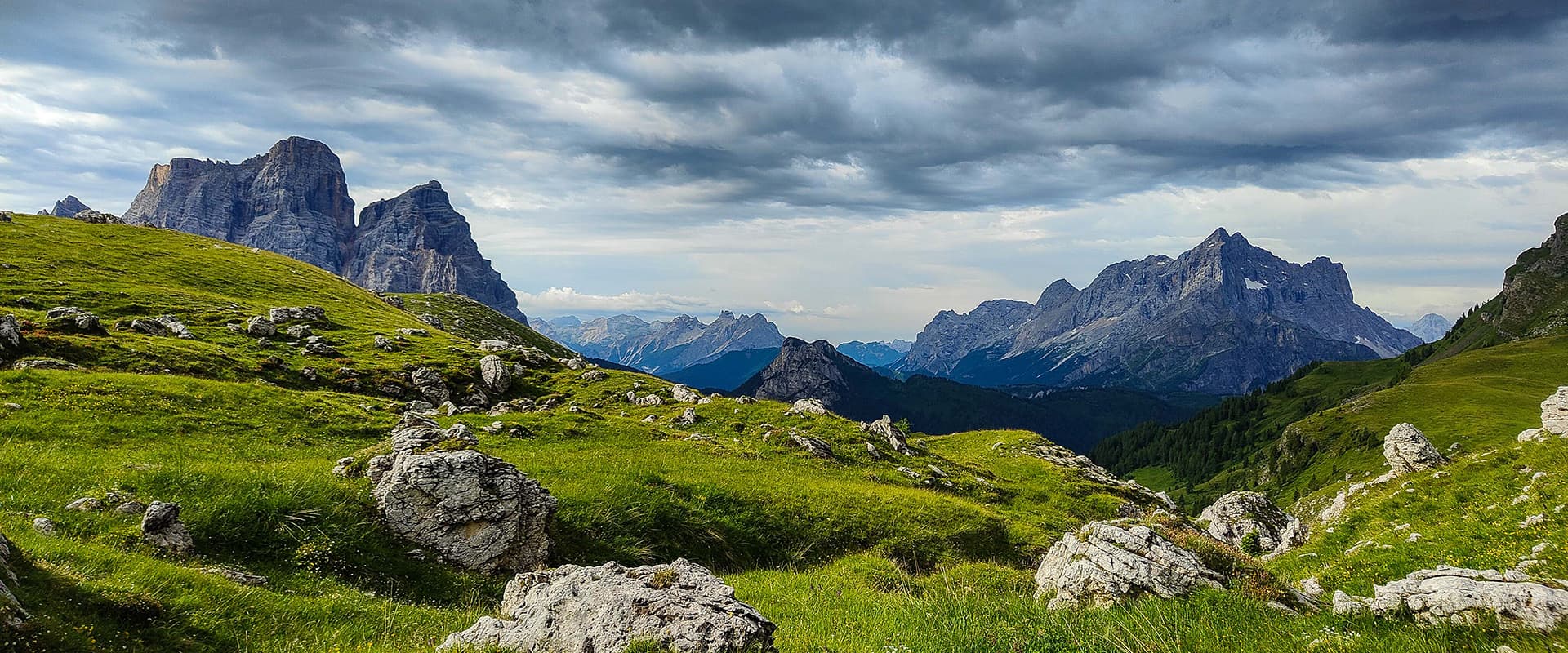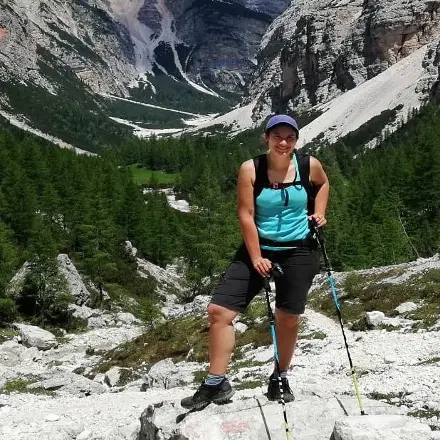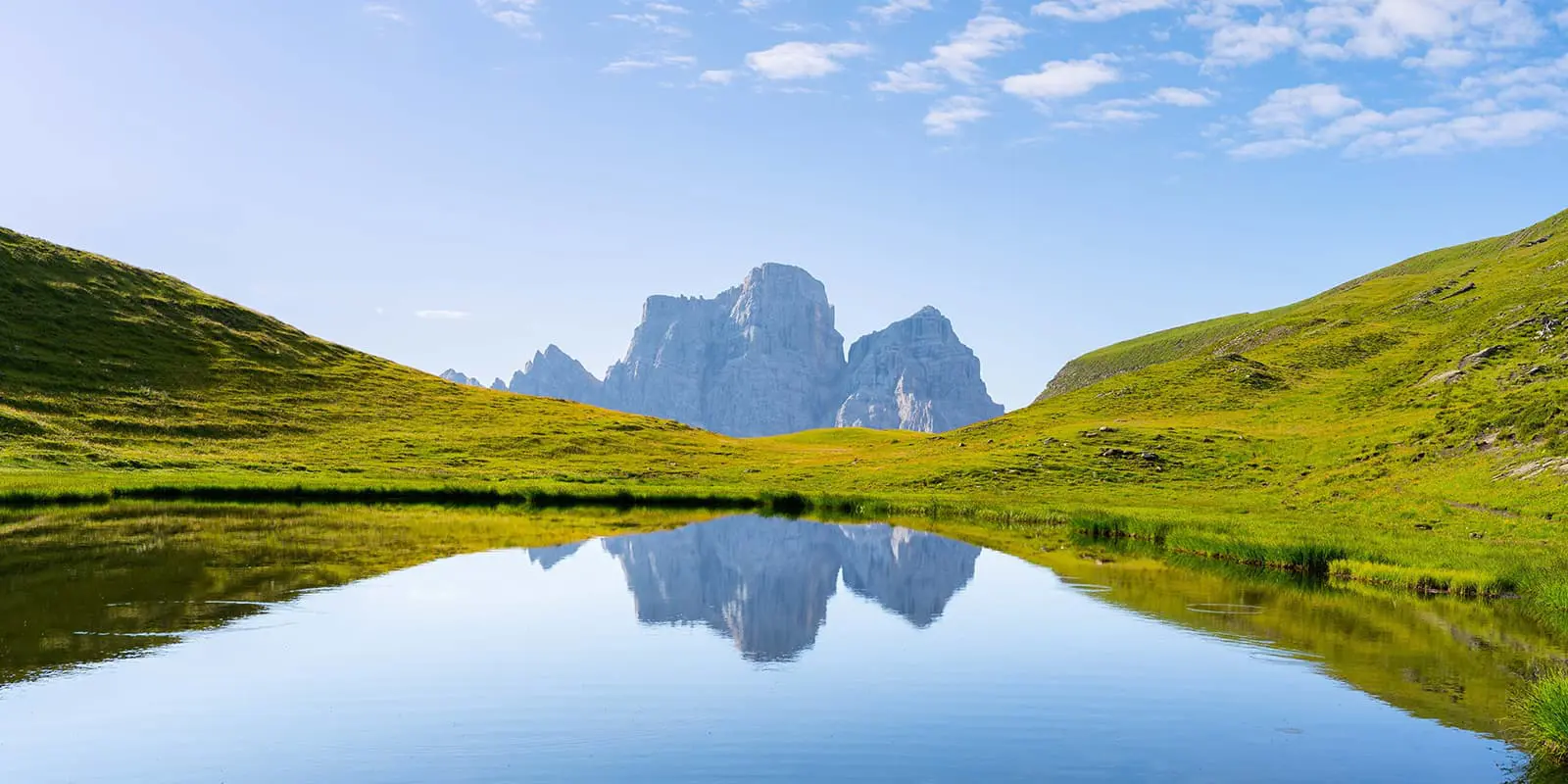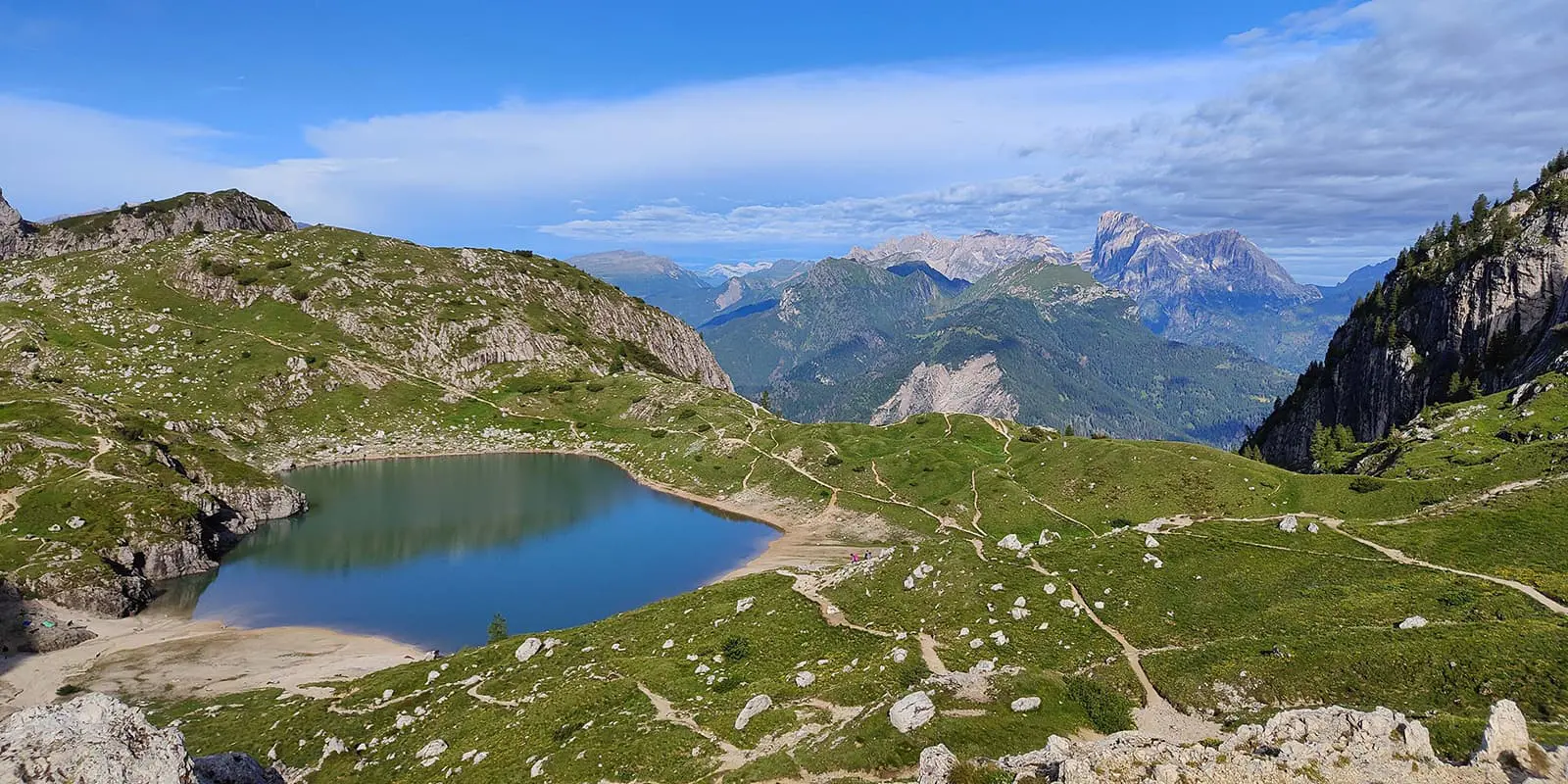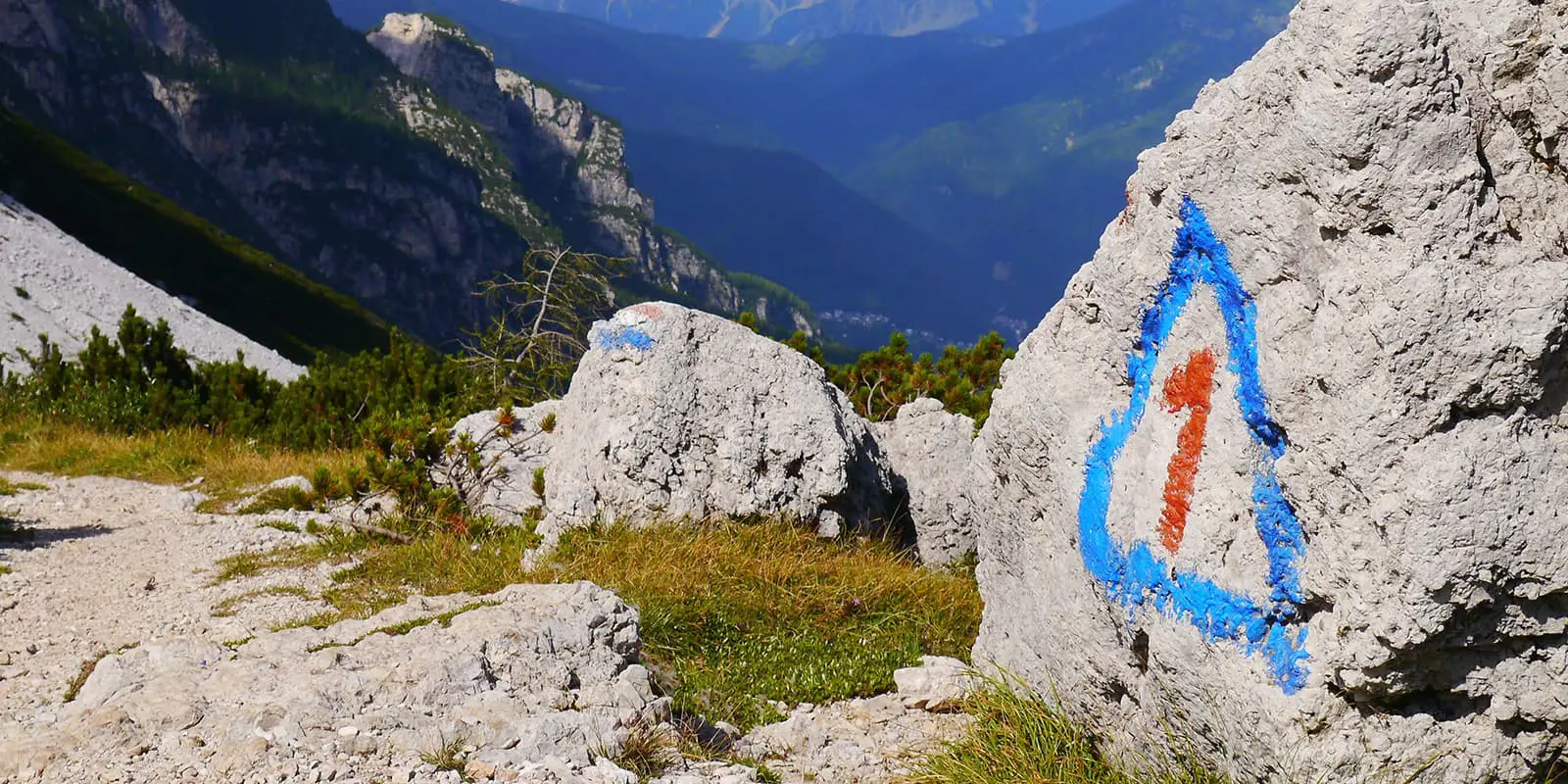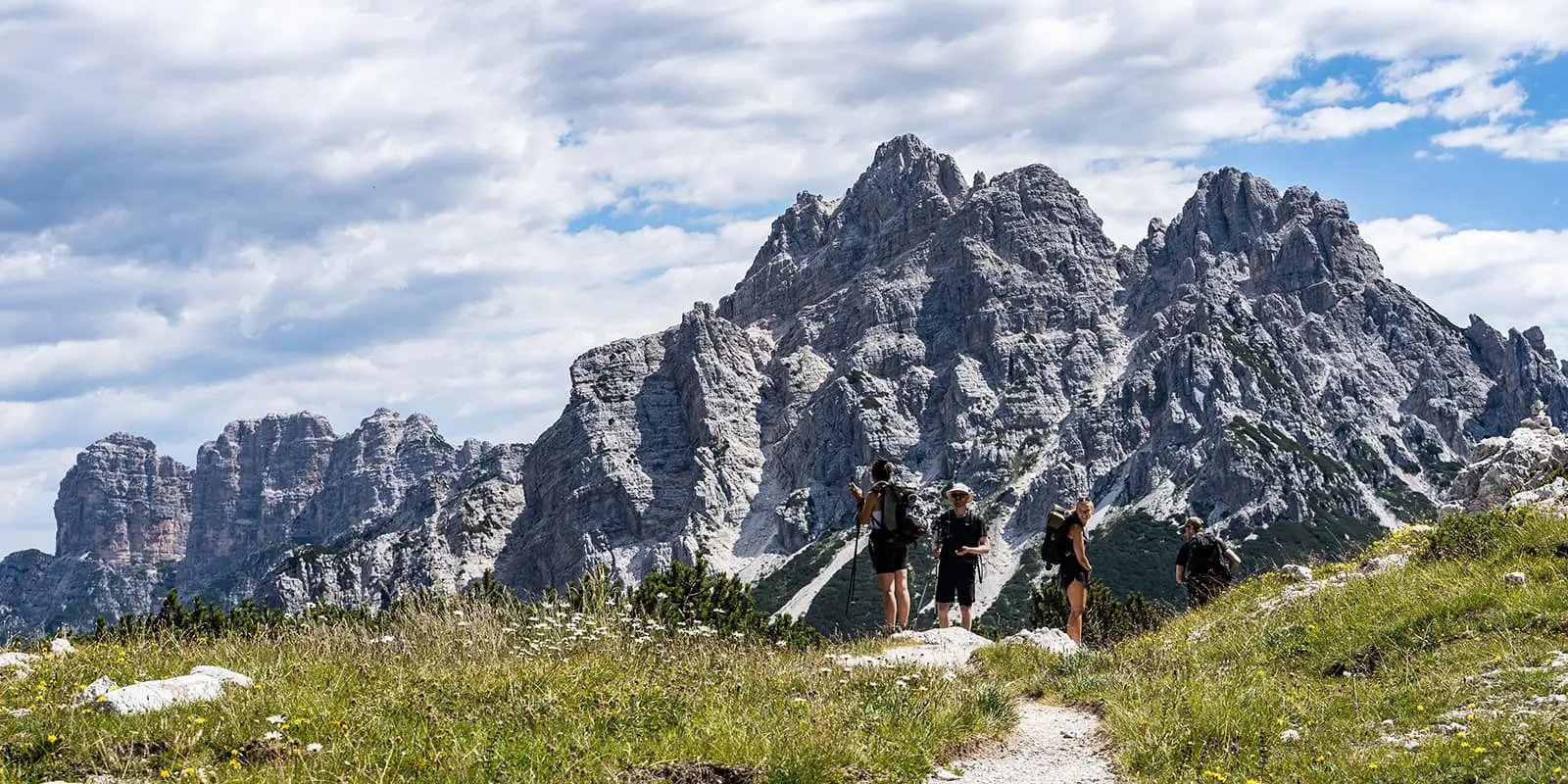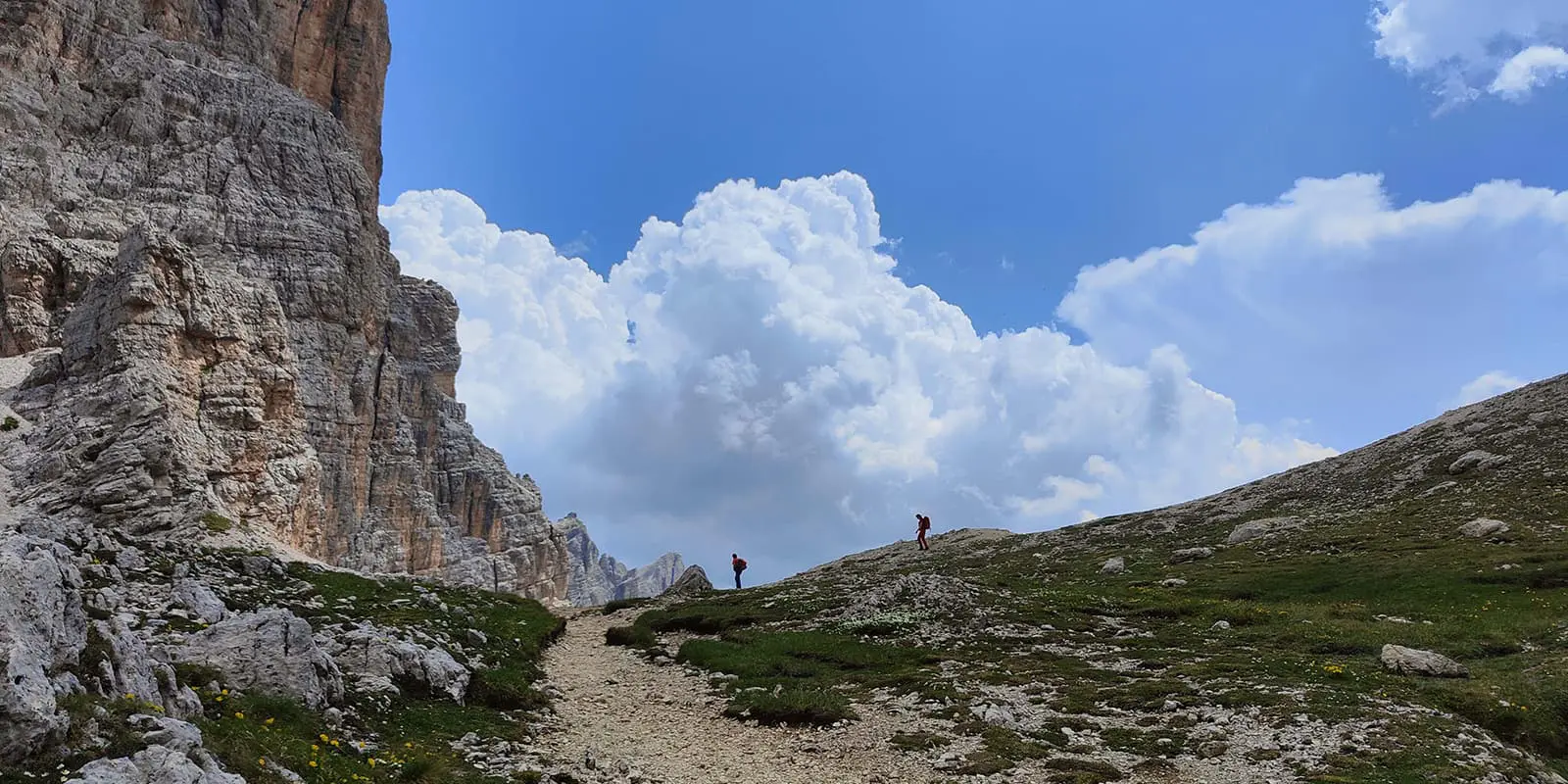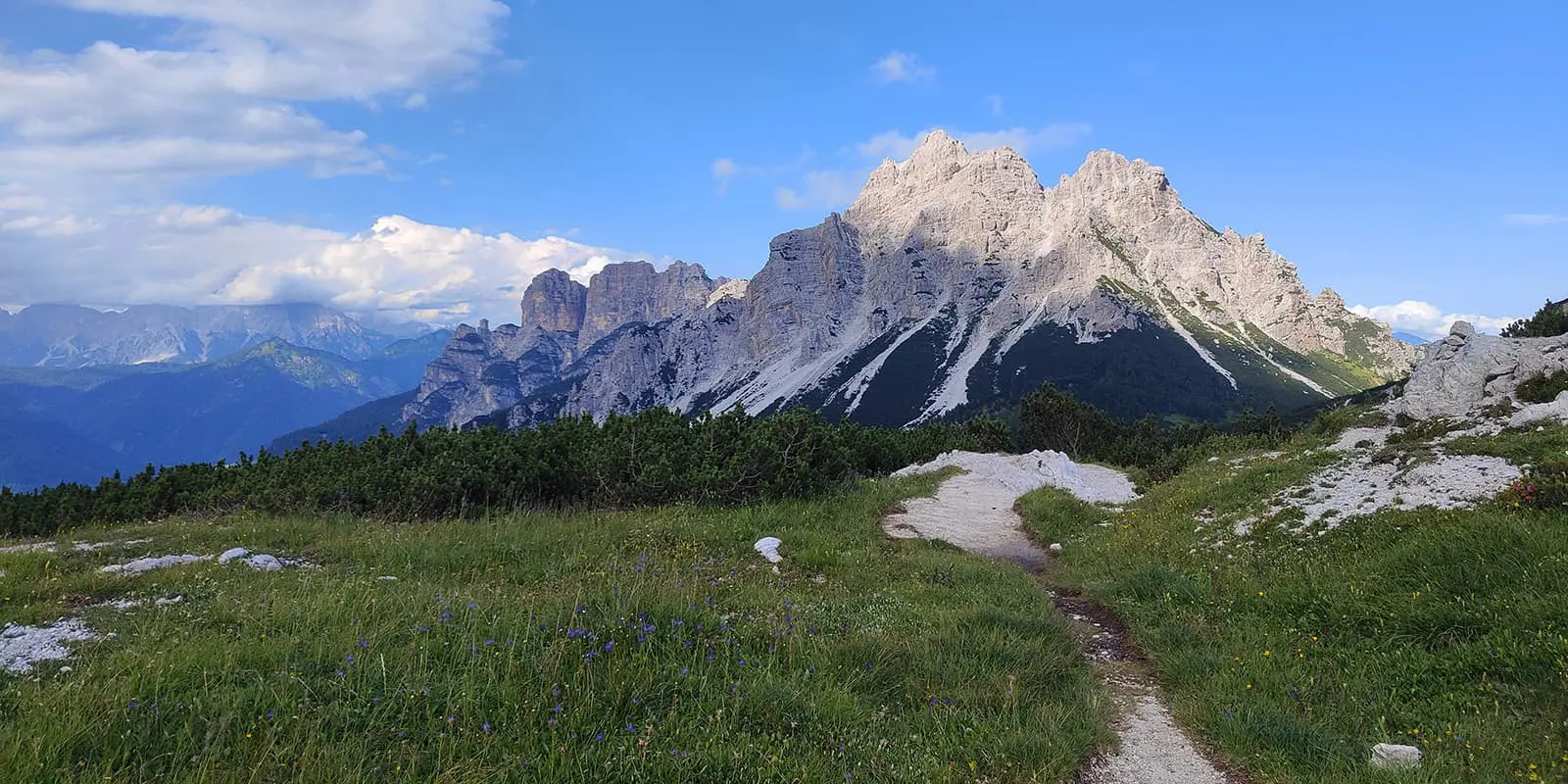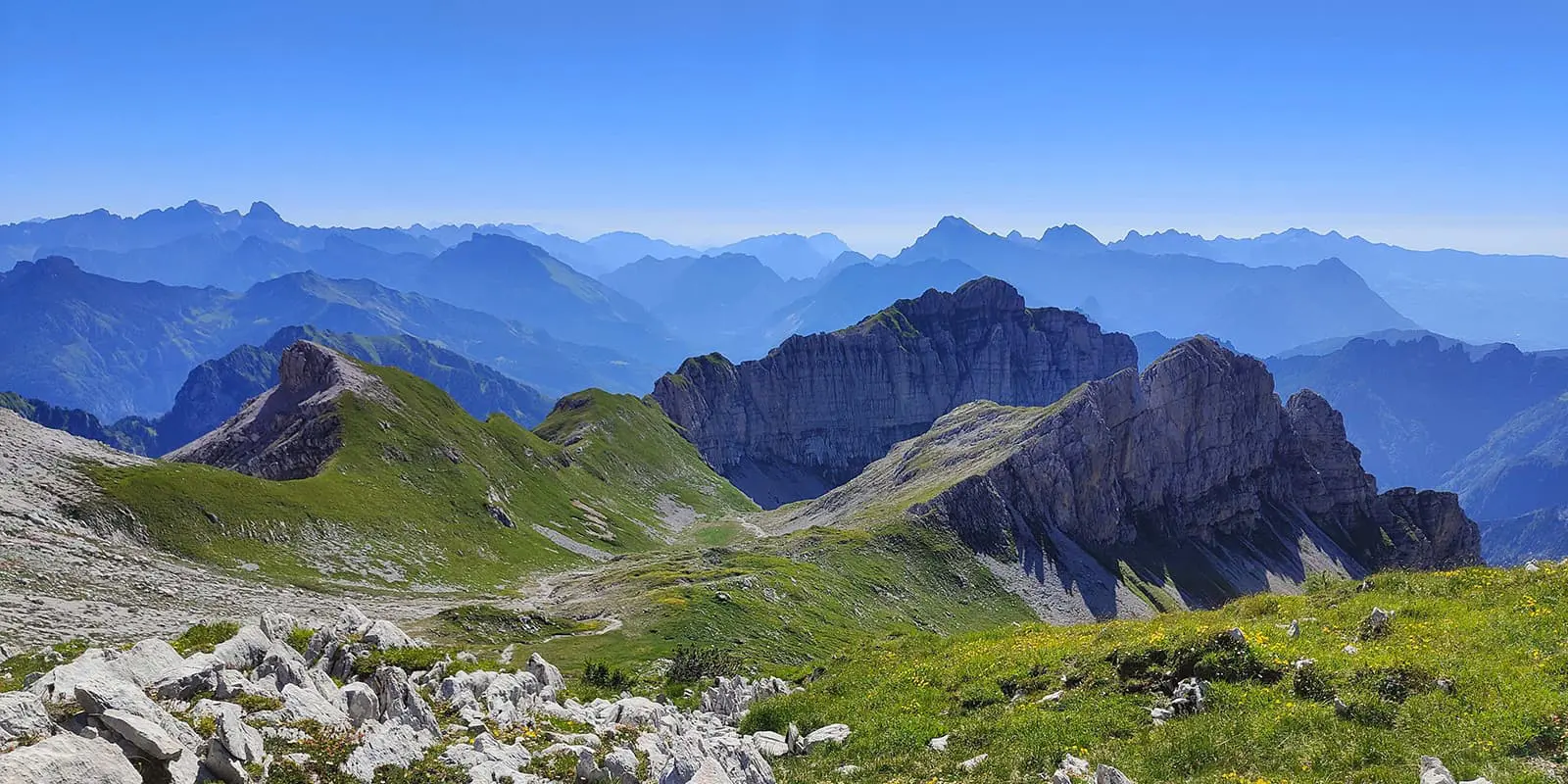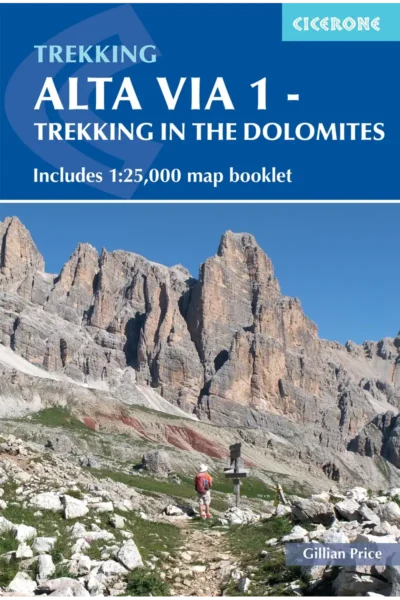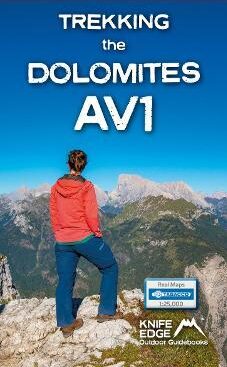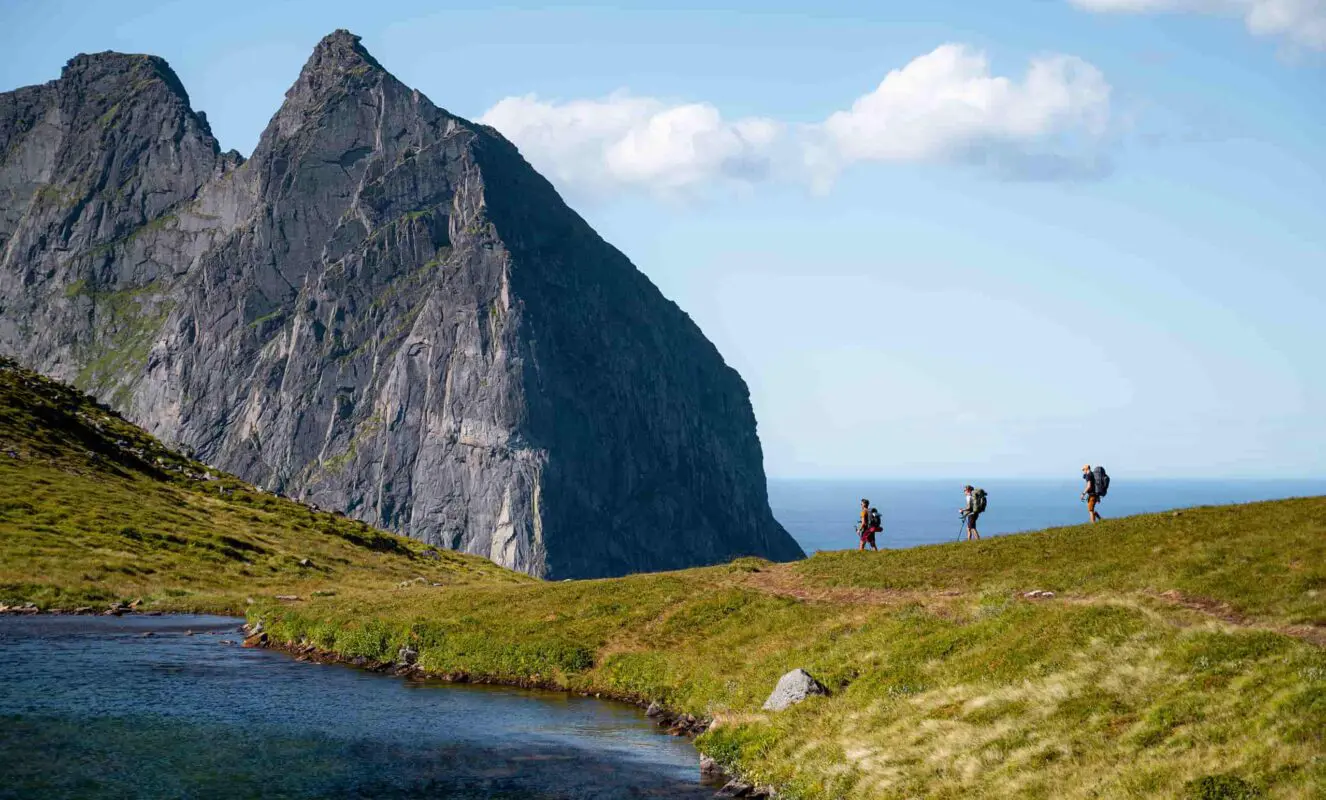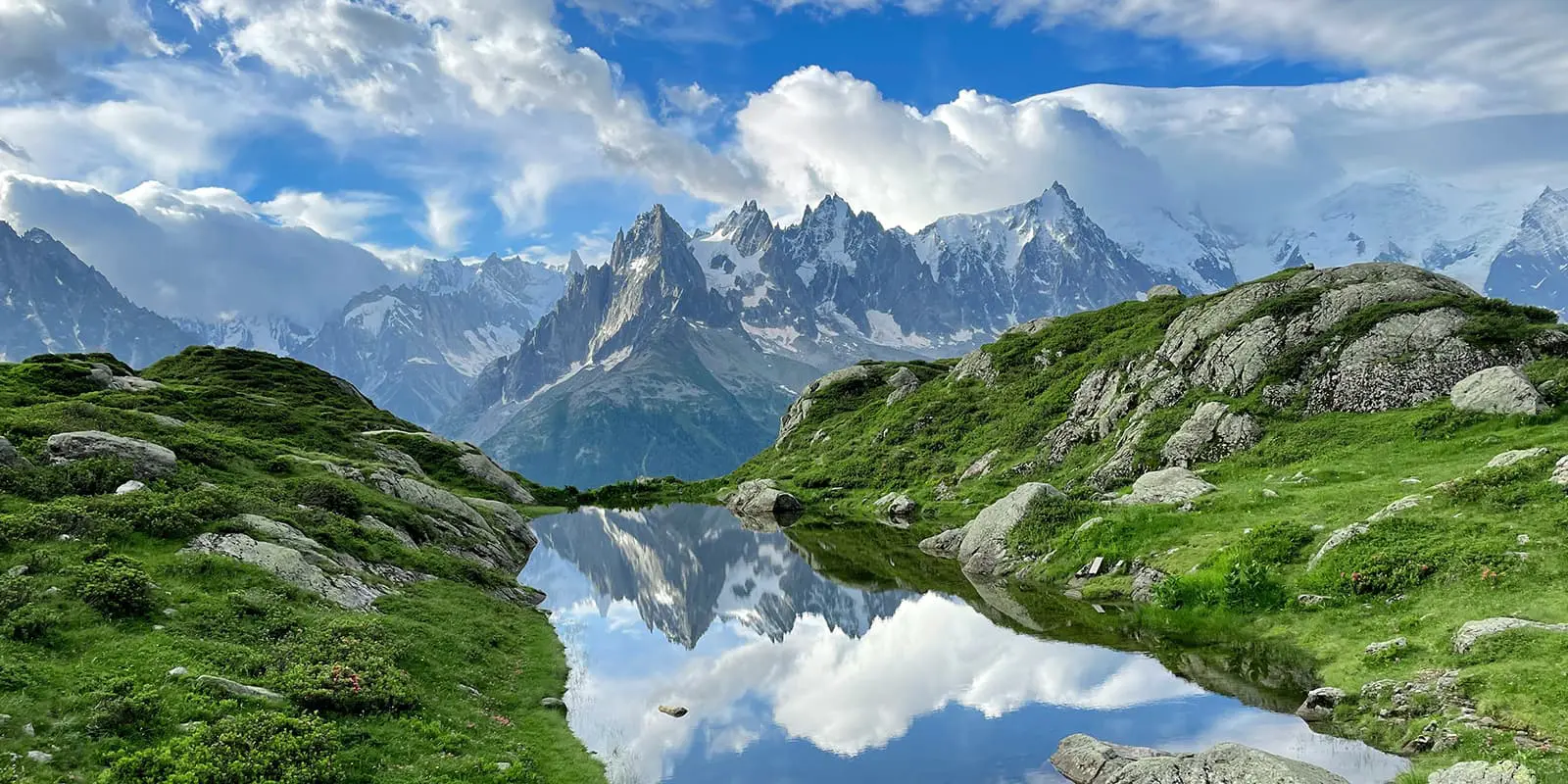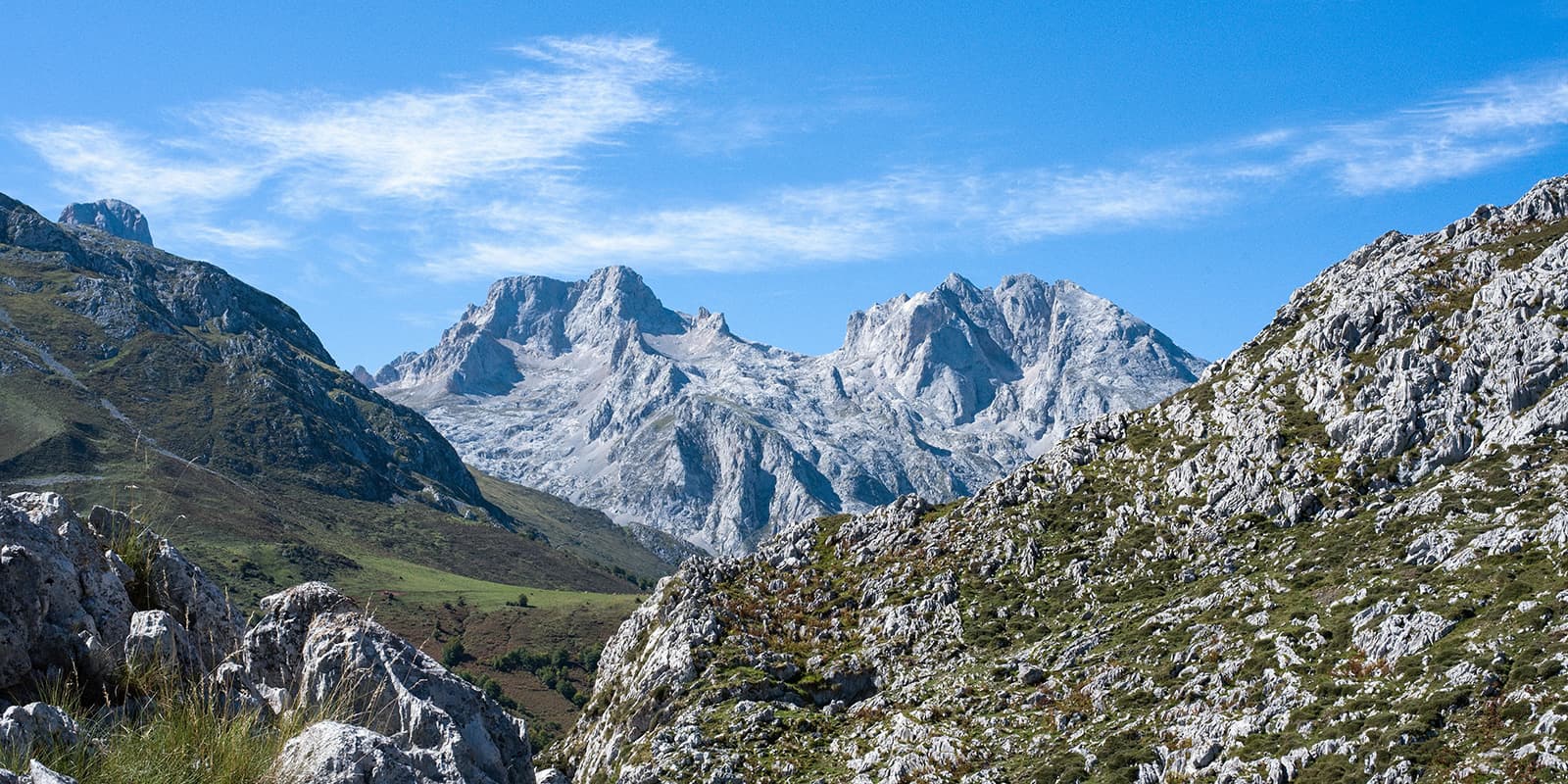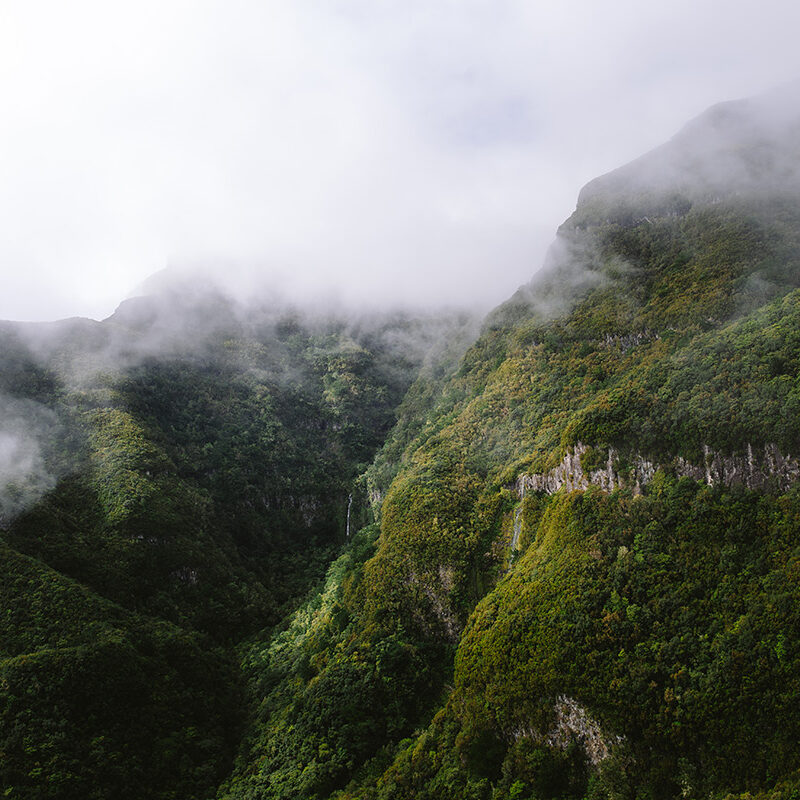During this hike, you will spend the night in typical Alpine ‘rifugios.’ A hut is a structure for hikers, offering rest and refreshments to those who tackle long hikes. Do not expect luxury hotels! They are spartan facilities, but the hospitality of the managers, the beautiful views, and the good food will make you love your break.
The rooms are shared, as are the bathrooms. Showers are not always available, water is a precious commodity. You must bring a sheet bag for the night, and slippers. The average cost is 65 to 75 euros per night, including overnight stay, dinner, and breakfast. Don’t forget, before you leave, to take a sandwich with you for lunch!
Reservations are compulsory, and best made in advance. Since this route is very busy, it is best to start booking huts as early as January/February!
The food is simple but tasty, don’t forget to try the typical pastin and grilled cheese!
As already mentioned, this division into stages is not strict. Between one refuge and another, there are almost always 1 or 2 others (or more), which allows you to change the stages according to your needs, or the availability of the refuges.
The last night is in a bivouac. This is a small emergency structure, free and always open. A sleeping bag is obligatory, as is having all the necessary food. There is no heating or bathroom. However, you can extend the stage until you reach the next and last refuge, the Rifugio Settimo Alpini.
Camping on Alta Via 1
Camping is prohibited throughout the Dolomites. However, in recent years, the huts are not able to accommodate all the requests they receive, so it is fairly tolerated. It is common to see people camping along the Alta Via. However, a guard may come and tell you to leave.
If you choose to tent, avoid crowded areas, always leave everything clean, take ALL your rubbish away (including apple cores and toilet paper), and never light fires. If you decide to stay near the hut, always ask permission (and maybe dine in the hut).


